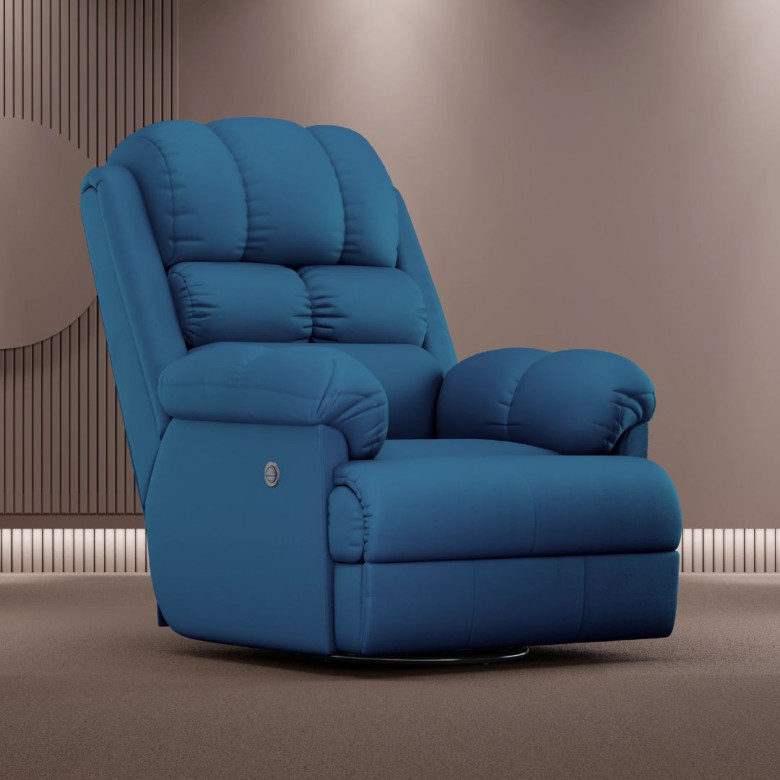views
A recliner is more than just a chair—it's a personal relaxation station, a cozy reading nook, a post-work haven, or even a must-have for movie nights. Whether you're furnishing a new space or upgrading your current one, finding the perfect recliner for your home can transform both comfort and aesthetics. However, with so many options available in style, size, and functionality, it’s easy to feel overwhelmed.
This guide will walk you through everything you need to know to make a smart, satisfying recliner purchase.
1. Assess Your Needs and Lifestyle
Before diving into designs and features, think about why you want a recliner.
-
Do you need it for watching TV or reading?
-
Will it serve as a nap spot?
-
Do you need support for back pain or mobility issues?
-
Is it for a formal living room, a cozy den, or a bedroom?
Understanding your primary use helps you determine what features—such as swivel, rocker, massager, or power-lift—you should prioritize.
2. Measure Your Space
Recliners can be deceptively bulky. Always measure your available space before choosing a model.
-
Closed Dimensions: Ensure it fits without crowding your room.
-
Extended Dimensions: Check how much room the chair needs when fully reclined.
-
Consider clearance from walls, foot traffic flow, and nearby furniture.
If you have a compact space, look for wall-hugger recliners that need minimal distance to recline.
3. Choose the Right Type of Recliner
Recliners come in several styles, each offering unique features. Common types include:
-
Two-Position Recliners: Basic models that recline to a single position. Budget-friendly and great for casual use.
-
Rocker or Glider Recliners: Ideal for nurseries or relaxation, these recliners rock back and forth when upright.
-
Push-Back Recliners: Sleek, armless styles without levers. Perfect for modern homes.
-
Power Recliners: Operated with buttons and motors, these offer smooth transitions and often include massage or heating functions.
-
Lift Chairs: Ideal for seniors or those with limited mobility, lift recliners gently tilt forward to assist standing up.
Choose a type that matches your physical needs, design taste, and usage frequency.

4. Consider Material and Upholstery
Your recliner should not only feel good—it should look good and last long. Upholstery options include:
-
Leather: Luxurious, durable, and easy to clean, though it may be expensive and cold to the touch.
-
Faux Leather (PU or PVC): Affordable with a leather-like appearance, but less durable over time.
-
Fabric (Cotton, Polyester, Microfiber): Comfortable and warm, with lots of color and pattern choices. Look for stain-resistant options if you have kids or pets.
-
Velvet or Suede: Adds a touch of sophistication, but may require extra care.
Match the fabric with your room’s aesthetic and consider allergy concerns, climate, and ease of maintenance.
5. Test for Comfort and Ergonomics
Comfort is subjective, so if possible, test the recliner in person. Look for:
-
Lumbar Support: Does it support your lower back?
-
Cushion Firmness: Too soft may lack support, too firm may feel uncomfortable.
-
Footrest Comfort: Are your legs well-supported when reclined?
-
Recline Mechanism: Is it smooth and easy to operate?
-
Head and Neck Support: Especially important for taller users.
Make sure the recliner fits your body type. Your feet should touch the floor when sitting upright.
6. Look at Extra Features
Modern recliners come packed with convenience features:
-
Cup holders and storage consoles
-
Built-in USB ports
-
Massage and heating options
-
Swivel and 360-degree rotation
-
Power headrests and adjustable lumbar support
While these features increase cost, they also add substantial value, especially if you plan to use the chair daily.
7. Match the Style to Your Décor
A recliner shouldn’t stick out like a sore thumb. Today’s designs range from classic to ultra-modern:
-
For traditional spaces, look for tufted leather or plush fabric recliners with rolled arms.
-
For modern interiors, go for sleek lines, slim profiles, and neutral tones.
-
Accent recliners can serve as a stylish focal point with bold colors or patterns.
Choose a color and finish that blends seamlessly with your room’s overall design.
8. Check the Warranty and Brand Reputation
A recliner is an investment. Choose a reputable brand known for durability, comfort, and customer service. Also:
-
Read reviews and user experiences.
-
Check warranty coverage—good recliners often come with 3 to 10 years of warranty for frames, springs, and mechanisms.
-
Understand the return policy, especially for online purchases.
9. Set a Realistic Budget
Recliners can range from ₹10,000 to ₹1,00,000 or more, depending on brand and features. Set a budget that reflects your needs and expected usage.
-
Basic models (₹10,000–₹20,000): Good for occasional use or guest rooms.
-
Mid-range (₹20,000–₹50,000): Best for daily use with better materials and comfort.
-
Premium range (₹50,000+): Power recliners with advanced features, luxury materials, and long-term durability.
Remember, a well-chosen recliner pays off in comfort and longevity.
Conclusion
The perfect recliner combines functionality, comfort, style, and space efficiency. Whether you need a cozy reading chair, a post-work stress reliever, or a supportive seat for health reasons, choosing wisely ensures years of satisfaction. By considering your lifestyle, space, body needs, and design preferences, you can find a recliner that feels tailor-made for your home.



Comments
0 comment